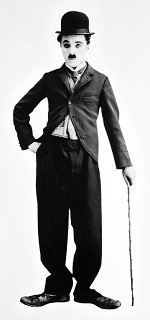Corgi AA28802 Royal Flying Corps Bristol F2B Fighter - D8084/S, "Charlie Chaplin", Capt. Sydney Dalrymple and 2/Lt. G. Beagle, RAF No.139 Squadron, Villaverla Aerodrome, Italy, August 1918 (1:48 Scale)
"Aviation is proof that given, the will, we have the capacity to achieve the impossible."
- Eddie Rickenbacker
 The Bristol F.2 fighter was a British two-seat biplane fighter and reconnaissance aircraft of the First World War flown by the Royal Flying Corps. It is often simply called the Bristol Fighter or popularly the "Brisfit" or "Biff". Despite being a two-seater, the F.2B proved to be an agile aircraft that was able to hold its own against opposing single-seat fighters. Having overcome a disastrous start to its career, the F.2B's solid design ensured that it remained in military service into the 1930s, and surplus aircraft were popular in civil aviation.
The Bristol F.2 fighter was a British two-seat biplane fighter and reconnaissance aircraft of the First World War flown by the Royal Flying Corps. It is often simply called the Bristol Fighter or popularly the "Brisfit" or "Biff". Despite being a two-seater, the F.2B proved to be an agile aircraft that was able to hold its own against opposing single-seat fighters. Having overcome a disastrous start to its career, the F.2B's solid design ensured that it remained in military service into the 1930s, and surplus aircraft were popular in civil aviation.
The Bristol F.2 Fighter was armed in what had by then become the standard weapons configuration for a British two-seater military aircraft: one synchronized fixed, forward-firing .303 in (7.7 mm) Vickers machine gun (in this case mounted under the cowling to avoid freezing) and a single flexible .303 in (7.7 mm) Lewis Gun on a Scarff ring over the observer's rear cockpit.
The F.2B variant often carried a second Lewis gun on the rear cockpit mounting, although observers found the weight of the twin Lewis gun mounting difficult to handle in the high altitudes at which combat increasingly took place in the last year of the war, many preferring to retain a single gun.
Attempts were made to add a forward-firing Lewis gun on a Foster mounting or similar on the upper wing either instead of, or in addition to, the Vickers gun. Among other problems this caused interference with the pilot's compass, which was mounted on the trailing edge of the upper wing: to minimize this effect the Lewis gun was offset to starboard.
Pictured here is a 1:48 scale replica of a Royal Flying Corps Bristol F2B biplane fighter that was piloted by Captain Sydney Dalrymple and 2/Lt. G. Beagle, who were attached to RAF No.139 Squadron, then deployed to Villaverla Aerodrome, Italy, during August 1918. This aircraft bears the image of Charlie Chaplin near the port side of the engine.
Now in stock!
Dimensions:
Length: 6-1/2-inches
Wingspan: 9-3/4-inches
Release Date: March 2022
 Historical Account: "Charlie Chaplin" - Great War Australian ace pilot, Captain Sydney Dalrymple, transferred to the newly formed No.139 Squadron at Villaverla in Italy during the summer of 1918, where he would be flying the Bristol fighter in an armed reconnaissance role. At this stage of the war, Dalrymple only had a single aerial victory to his name, however, this was gained while flying the Martinsyde G100 'Elephant', an aircraft which gained its nickname due to its size and ungainly flying characteristics. Early operations with the Bristol fighter in Italy proved disappointing, as the aircraft were initially flown in a similar manner to the much maligned BE2c, flying straight and level to allow the observer to take his pictures.
Historical Account: "Charlie Chaplin" - Great War Australian ace pilot, Captain Sydney Dalrymple, transferred to the newly formed No.139 Squadron at Villaverla in Italy during the summer of 1918, where he would be flying the Bristol fighter in an armed reconnaissance role. At this stage of the war, Dalrymple only had a single aerial victory to his name, however, this was gained while flying the Martinsyde G100 'Elephant', an aircraft which gained its nickname due to its size and ungainly flying characteristics. Early operations with the Bristol fighter in Italy proved disappointing, as the aircraft were initially flown in a similar manner to the much maligned BE2c, flying straight and level to allow the observer to take his pictures.
Indeed, the squadron had lost three crews in action during this period and only switched to flying the aircraft much more aggressively following the arrival of famous ace, William Barker, as their new Commanding Officer, who understood the fighting qualities of this effective multi-role aircraft. On August 8th, 1918, Dalrymple and his gunner, 2/Lt. G Beagle, used Bristol F2B Fighter D-8084 to shoot down two Aviatik D.1 Berg fighters near Caldonazzo during the same mission and would dispatch two Albatros D.IIIs on September 13th flying a different Bristol. Now officially an 'Ace' pilot, Dalrymple was awarded the Distinguished Flying Cross on November 1st, 1918. Bristol F2B Fighter D-8084 was unusual in that it carried the "Charlie Chaplin" artwork on the port side engine cowling.


